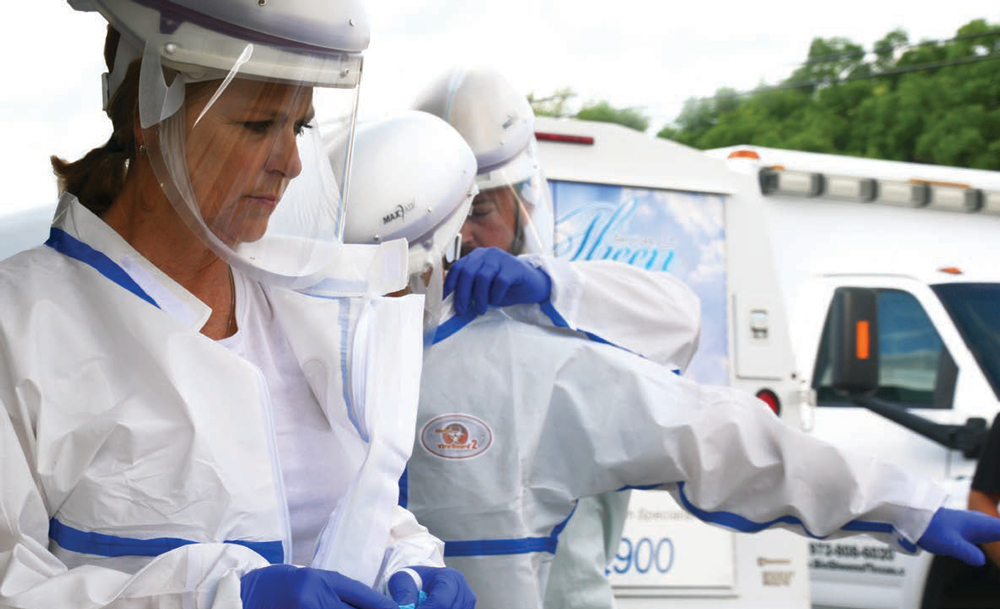Facing The Next Pandemic
Microbial warriors need to prepare and be ready to gear up and attack.
Pandemic: An infectious disease outbreak with global implications.
A pandemic is coming, and we are not ready. Experts across the globe agree it’s not if, but when. Bill Gates thinks a coming disease could kill 30 million people within six months—and says we should prepare for it as we do for war.1
Laurie Garret, a former senior fellow for global health at the Council on Foreign Relations and a Pulitzer Prize winning science writer, writes that the world knows that a pandemic is coming, but no one is really interested in doing anything about it.2
How can this be? The world spends billions on preparing for the next pandemic. So why then are we, as a global community, still not prepared?
History lessons
Let’s take a step back in time to the mid-1800s. It was the start of the Industrial Revolution, where populations of individuals began to mobilize, moving from rural settings to urban cities. People increasingly found themselves in crowded spaces, with poor sanitation, and poor public health infrastructures.
As a result, we saw increases in the number of communicable disease cases such as TB, typhoid, smallpox, and cholera. At the same time, the world began to recognize the connection between cleanliness and health, which spurred on the Sanitation Revolution of the late 1800s, where cities and countries began to implement new sanitation guidelines and laws.3
A great example is that of New York City, where pictures can tell the entire story.
Over the next 100+ years, there were great strides forward in infectious disease medical interventions: Vaccines, antibiotics, medical infection control, as well as the discipline and science of biosafety. Internationally, we saw the progression of the International Health Regulations, Global Health Security Agenda, and biorisk management quality management standards, which have all been extremely important and necessary for the world.
So why are we still not prepared as a global community? A simple single answer does not exist. What is known is that our world population continues to grow, and people are much more interconnected than ever before.
The ability to move from one place to another through- out the world in a matter of hours is a part of our daily life, moving microbes and disease-carrying vectors with us. We are also seeing more “superbugs,” microbes resistant to most or all the most powerful modern drugs.4
These examples are only a few that show the challenges we face when it comes to pandemic preparedness.
Prepare, respond, and recover
While the importance of cleanliness and sanitation has not been completely forgotten, it is time that we re-emphasis loudly the importance of cleanliness to health. In order to be prepared, we must all do our part. As individuals, we need to look at our own behaviors and act responsibly. Wash our hands, cover our mouths when we cough and sneeze, stay home when we are sick, and get our vaccinations.
The mission of ISSA is to “Change the Way the World Views Cleaning.” Similarly, GBAC, a division within ISSA, “Recognizes the need to bringing together the scientific, decontamination and restoration communities, to prepare from, respond to and recover from biological threats and dangers in an increasingly integrated world.”
As professionals in the cleaning, Forensic Restoration®, infection control, and biorisk management industries, we need to embrace that we are an important part of the front line of defense.
We need to train and prepare in order to be ready to respond and assist when the next outbreak occurs. To believe that it is only the responsibility of our medical professionals and governmental agencies is not fair nor appropriate. And it’s not enough.
We all have a piece of the puzzle. Everyone is a Microbial Warrior.
It takes a team
Like a sports team, preparing for the next outbreak or pandemic will take both offense and defense. Just-in-time training is not enough. Our prevention and response practices must become a daily practice and second nature, to diminish the impact of the next outbreak. When it does happen, we must be better prepared to gear up and attack. We must be vigilant, through training, education, and action, constantly building our skills and knowledge.
As Microbial Warriors, we need to be open to new technologies and solutions that are emerging in the marketplace that may assist us in our jobs to be more effective and efficient in cleaning, sanitization, and disinfection.
The days of “just throw a little bleach on it and we’re good to go” are gone.

Patricia (Patty) Olinger, JM, RBP, CFO, CBFRS, is the executive director of GBAC and has led EHS and biosafety teams in health care, academia, and pharma. An international expert in the development and implementation of biorisk management programs, including educational programs, she has a true passion for global public health preparedness, response, and recovery relating to emerging infectious diseases. She can be reached at [email protected].


